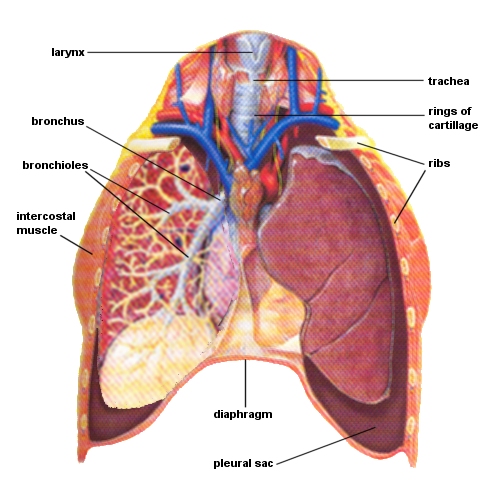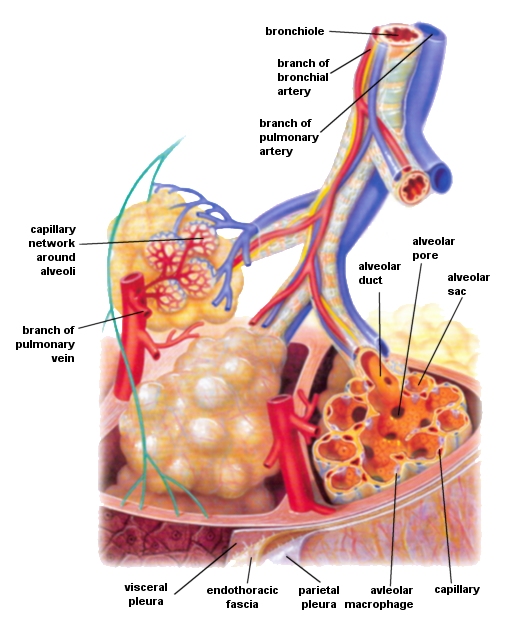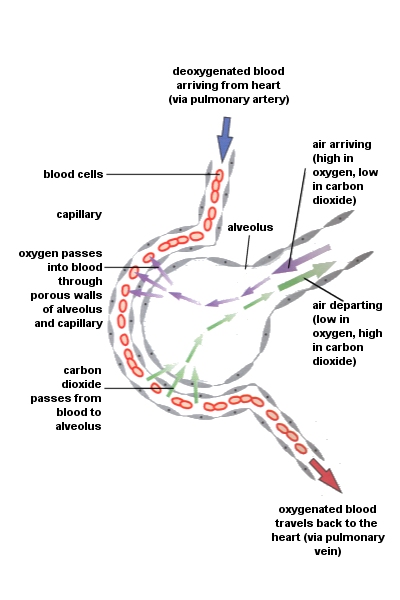Respiratory System
Structure of the Lungs
Air that has entered the body through the nose and mouth that has passed down the trachea, enters the lungs through the bronchi - the branches of the respiratory tube that connect the trachea to each lung.
Pleura
Surrounding each lung is a serous membrane that has two layers - an inner visceral layer that sticks to the lungs and an outer parietal layer that sticks to the walls of the chest and the top of the diaphragm. The space in between these two layers of the pleural sac is filled with a serous fluid called pleura.
Bronchi
The two bronchus are constructed of hyaline cartilage, involuntary muscle, connective tissue and are lined with ciliated epithelium. Their function is to pass gasses between the trachea and the lungs.
Lungs
The lungs themselves are positioned either side of the heart with the right lung being divided into three lobes and the left lung divided into two lobes. lung tissue is made of bronchioles, alveoli, blood vessels, nerves and connective & elastic tissues. The function of the lungs is to allow the exchange of gasses in and out of the blood.
Bronchioles
The two bronchi further divide into smaller tubes called bronchioles; these are made of muscular, fibrous and elastic tissue and get progressively smaller as they spread further into the lungs. They finally become a single layer of epithelial cells called terminal bronchioles.
Alveoli
The exchange of gasses inside the lungs takes place in tiny sacs that are called alveoli that are situated at the end of the terminal bronchioles. Each alveolus is made of a thin layer of squamous epithelial cells surrounded by a capillary network.
Since diffusion of gases occurs when a strong concentration of gas comes into contact with a weak concentration of the same gas, oxygenated gas entering the alveolus is at a higher pressure than the oxygen in the blood arriving from via pulmonary artery. The oxygen thus passes through the porous walls of the alveolus and capillary and into the blood and at the same time, carbon dioxide passes from the blood into the alveolus. This carbon dioxide is eventually expelled through the mouth prior to a subsequent breath of air being taken.



